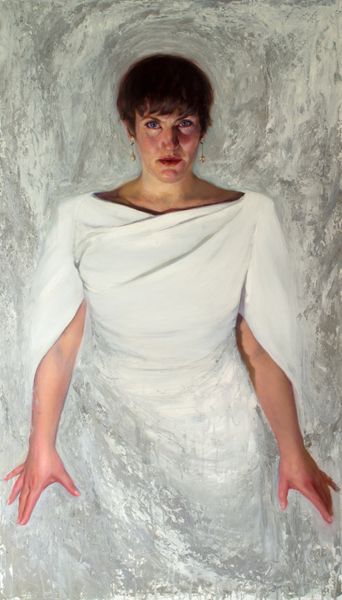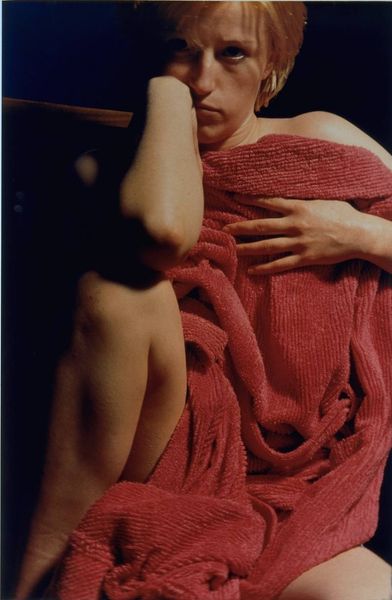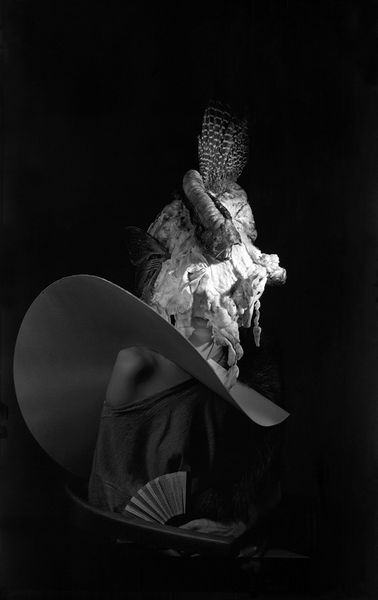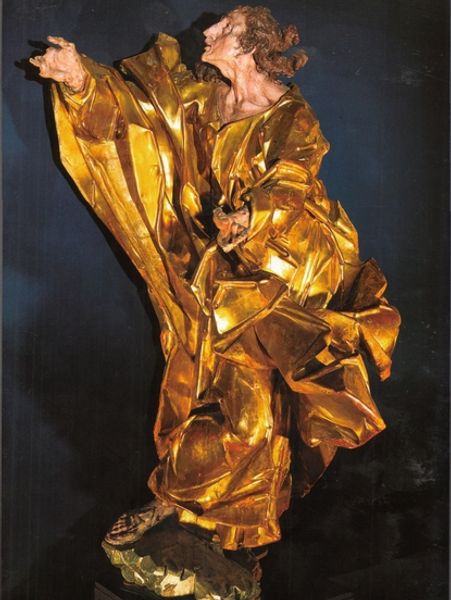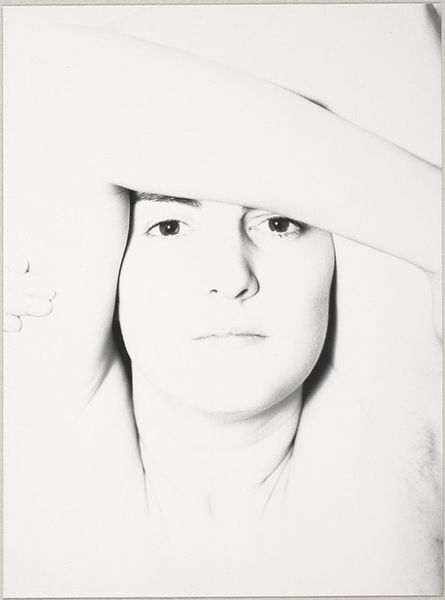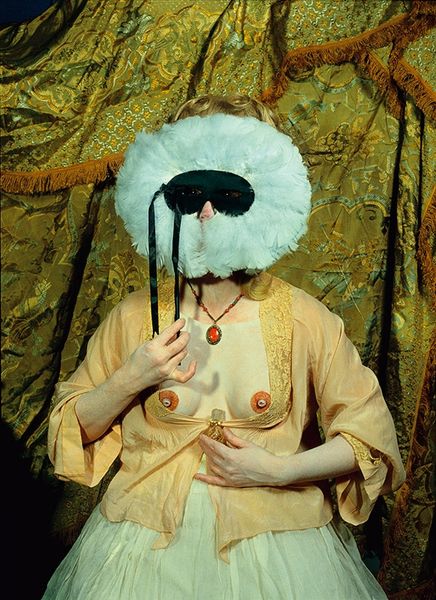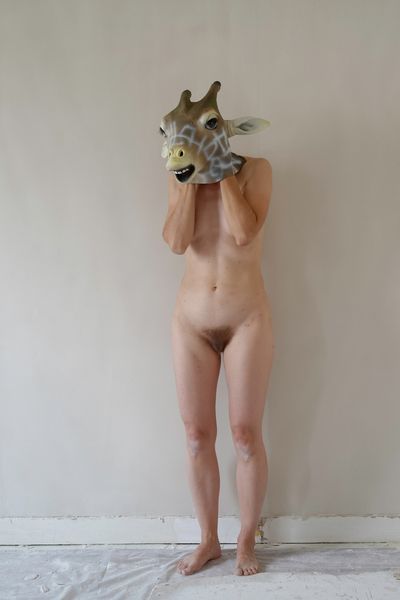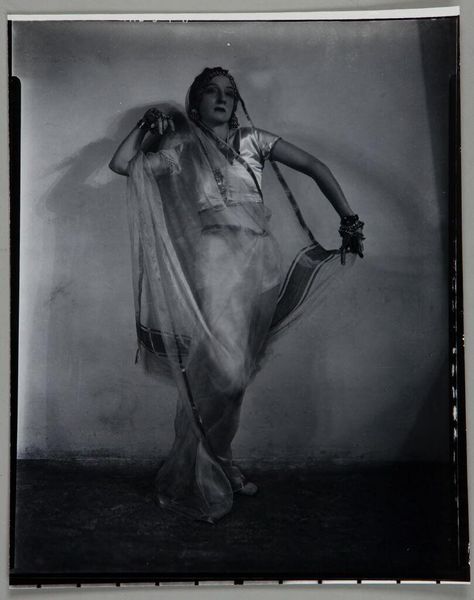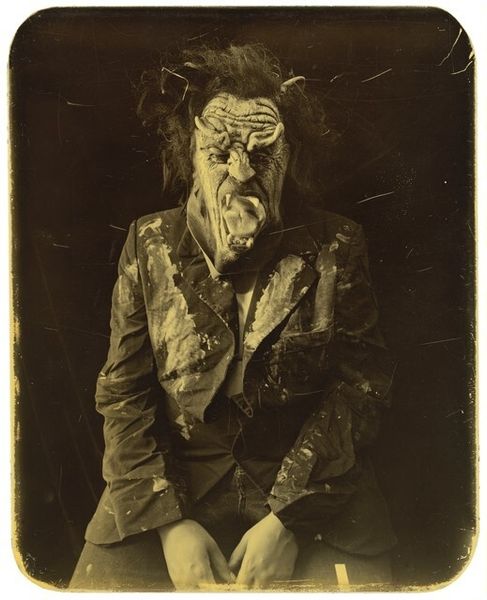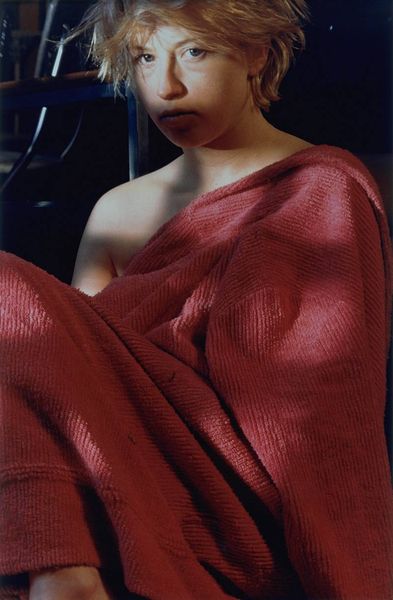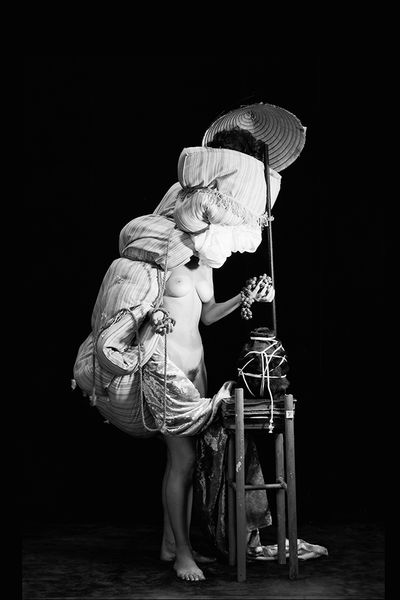
Copyright: Cindy Sherman,Fair Use
Editor: This is Cindy Sherman’s "Untitled #299," a photograph from 1994. The first thing that strikes me is the theatrical, almost unsettling, presence of the figure. How do you interpret this work? Curator: It’s fascinating how Sherman uses photography to deconstruct identity, isn't it? In this photograph, and indeed in most of her work, she's not simply taking a portrait. Instead, she is consciously adopting a persona and constructing a narrative. What aspects of this particular persona stand out to you, considering the historical context? Editor: Well, the rather grotesque presentation with the cigarette, gaudy gloves and what appears to be heavy makeup gives me the impression of some kind of caricature or maybe even a critique of femininity. Curator: Precisely. Sherman's work emerged within a postmodernist dialogue questioning societal norms and gender expectations. Through pastiche and parody, she dismantles idealized representations of women propagated by media and art history. Her works frequently expose how those representations often result in female identity becoming fragmented, constructed, and performative. Notice, for instance, how the red backdrop amplifies this sense of constructed artificiality and exaggeration, challenging notions of authentic beauty. In what ways might this be relevant today? Editor: It's like she is deliberately creating a flawed representation to comment on the unreal standards imposed on women, an idea that's still highly relevant now considering all the beauty standards portrayed through social media. I now see that Sherman anticipated so many of our conversations on contemporary media culture. Curator: Exactly! Seeing how Sherman predicted the relationship between identity and performance helps understand what the piece might mean to a contemporary audience. Thank you. Editor: Thank you! I learned a lot by digging into Sherman's socio-historical environment.
Comments
No comments
Be the first to comment and join the conversation on the ultimate creative platform.
